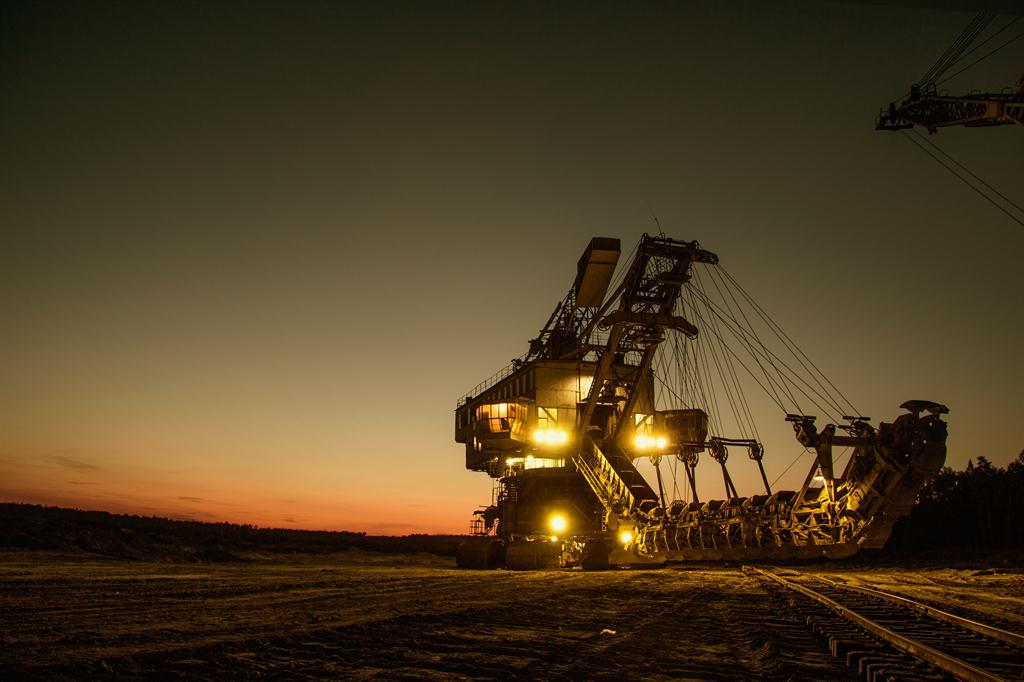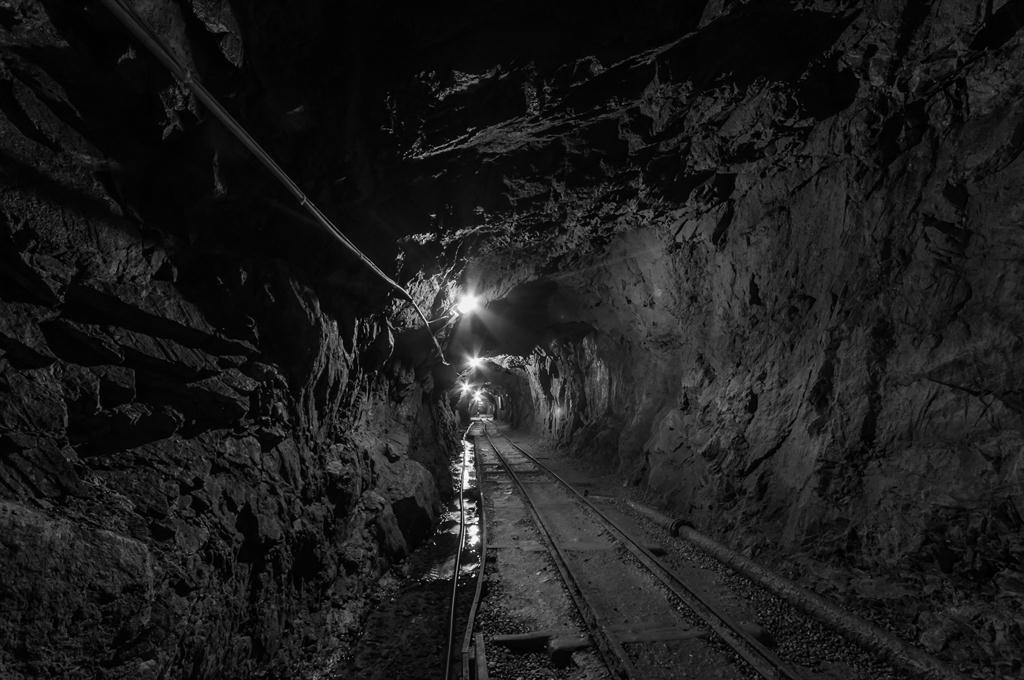Power of mines
The intricacy of the Namibian mining sector
The history of mining in Namibia is over 400 years old, with archaeological evidence of copper smelting near today’s Matchless Mine as the oldest record of mining.
The indigenous people of the Otavi Mountainland also made use of the abundant copper ore in the area. The first prospectors visited Namibia in 1761/62 and 1790/92, and reported that the local inhabitants mined, processed and traded copper. By 1850, Chief Jonker Afrikaner had established informal copper mining operations at the Natas Mine, and traded the ore in Walvis Bay. Commercial mining commenced in 1856 with the opening of the Matchless Copper Mine, followed by the Pomona Silver Mine in 1864.
Namibia’s mining sector has since grown into a world-class producer of gem quality rough diamonds, uranium oxide, special high-grade zinc, gold bullion, blister copper, lead and zinc concentrate, salt and dimension stone. The country is home to a number of globally-renowned mining companies that have adopted state-of-the-art mining and processing technologies, and are proud members of the Chamber of Mines.
Today, mining activities make up a vital part of the country’s economy. The industry is the biggest primary sector in terms of gross domestic product (GDP) compared to fishing and agriculture, and is the predominant generator of foreign exchange earnings through the sale and export of mineral products.
Mining is an important source of income to government, and generates approximately 7% of the fiscus each year. The industry is inherently capital-intensive and its contribution to direct job creation is relatively small when compared to tourism, fishing and agriculture. However, the multiplier effect of mining creates a large number of indirect jobs through procurement activities in the local supply chain.
In addition to job creation, towns and communities have benefitted from mining through targeted investments into infrastructure and facilities such as health and education, but also from impactful corporate social responsibility initiatives that aim to boost local economic development. Moreover, members of the Chamber are actively engaged in environmental conservation efforts to help communities preserve and protect their surrounding natural ecosystems and habitats.
Namibia's mining industry produces diamonds, uranium, copper, magnesium, zinc, silver, gold, lead, semi-precious stones and industrial minerals. However, diamonds and uranium still represent the country's most salient commodities from an export revenue point of view.
Namibia is the world’s fourth largest producer of uranium oxide. The nuclear industry continues to fuel the demand for uranium. In 2018, the Husab open-pit uranium mine produced 3 028 tonnes of uranium oxide, making it the third largest uranium mine in the world. Husab is owned by a subsidiary of China General Nuclear Power Company. The mine represents one of China’s single largest investments in Africa. It was discovered in 2008, and produced its first drum of uranium oxide for export in December 2016. As of 2018, the operation accounted for 6% of global uranium production.
The Rossing Uranium mine, situated in the Namibian desert, is the fifth largest producer of uranium oxide in the world. The mine contains the largest uranium deposit in the world associated with an igneous rock, and in 2019, it produced 2 102 tonnes (or 4%) of the world’s uranium. It is one of the longest running uranium mines globally, having begun operations in 1976.
The mine is majority owned by China National Uranium Corporation (CNUC).
Namibia is also a leading producer of zinc. There are two operational mines: Skorpion Zinc (operated by Vedanta Resources) and Rosh Pinah (owned by various shareholders, with Exxaro Base Metals owning the largest interest at 46%).
Lodestone, a mining company with US shareholding, has begun operations to extract and develop iron ore deposits in eastern Namibia. The Lodestone Dordabis mine commenced production in 2015, the first operational iron mine in Namibia. The magnetite and hematite products are being sold to local niche consumers, such as Ohorongo Cement. Local sulphuric acid and iron ore production are being consumed as inputs by Namibian operations, exemplifying how mining sector growth leads to the expansion of up-stream and services sectors.
The outlook for lithium and cobalt is also good, with deposits under development with new investments. Desert Lion began shipping lithium ore in 2018, with a first shipment of 30 000 tonnes. Gecko Opuwo Cobalt is developing a cobalt deposit in the Kunene Region.
Diamonds have been mined in Namibia since 1908, when railway worker Zacharias Lewala found a stone that would change the course of history of South West Africa/Namibia, and of alluvial mining.
Infographic:
Mines in Namibia
Weatherly Mining Namibia – Copper
Okorusu Fluorspar – Fluorspar
Otjosondu Manganese Mine – Manganese
Navachab – Gold (Situated near Karibib)
B2Gold – Gold (North-central part of Namibia)
Gecko Opuwo Cobalt – Cobalt (Swakopmund)
Desert Lion Energy - Lithium (Walvis Bay)
Rosh Pinah – Zinc and lead (//Karas region)
Swartmodder Mine – Copper (near Rehoboth)
Koakoland Mining – Copper
Otjozondu Mining – Copper
Lodestone Namibia – Iron core
Rossing Uranium Limited– Uranium oxide (Erongo Region)
Langer Heinrich – Uranium oxide
Swakop Uranium (Husab Mine – Uranium
DeBeers Marine – Diamonds (Erongo Region)
Namdeb – Diamonds
Dundee Precious Metals (Tsumeb)
The indigenous people of the Otavi Mountainland also made use of the abundant copper ore in the area. The first prospectors visited Namibia in 1761/62 and 1790/92, and reported that the local inhabitants mined, processed and traded copper. By 1850, Chief Jonker Afrikaner had established informal copper mining operations at the Natas Mine, and traded the ore in Walvis Bay. Commercial mining commenced in 1856 with the opening of the Matchless Copper Mine, followed by the Pomona Silver Mine in 1864.
Namibia’s mining sector has since grown into a world-class producer of gem quality rough diamonds, uranium oxide, special high-grade zinc, gold bullion, blister copper, lead and zinc concentrate, salt and dimension stone. The country is home to a number of globally-renowned mining companies that have adopted state-of-the-art mining and processing technologies, and are proud members of the Chamber of Mines.
Today, mining activities make up a vital part of the country’s economy. The industry is the biggest primary sector in terms of gross domestic product (GDP) compared to fishing and agriculture, and is the predominant generator of foreign exchange earnings through the sale and export of mineral products.
Mining is an important source of income to government, and generates approximately 7% of the fiscus each year. The industry is inherently capital-intensive and its contribution to direct job creation is relatively small when compared to tourism, fishing and agriculture. However, the multiplier effect of mining creates a large number of indirect jobs through procurement activities in the local supply chain.
In addition to job creation, towns and communities have benefitted from mining through targeted investments into infrastructure and facilities such as health and education, but also from impactful corporate social responsibility initiatives that aim to boost local economic development. Moreover, members of the Chamber are actively engaged in environmental conservation efforts to help communities preserve and protect their surrounding natural ecosystems and habitats.
Namibia's mining industry produces diamonds, uranium, copper, magnesium, zinc, silver, gold, lead, semi-precious stones and industrial minerals. However, diamonds and uranium still represent the country's most salient commodities from an export revenue point of view.
Namibia is the world’s fourth largest producer of uranium oxide. The nuclear industry continues to fuel the demand for uranium. In 2018, the Husab open-pit uranium mine produced 3 028 tonnes of uranium oxide, making it the third largest uranium mine in the world. Husab is owned by a subsidiary of China General Nuclear Power Company. The mine represents one of China’s single largest investments in Africa. It was discovered in 2008, and produced its first drum of uranium oxide for export in December 2016. As of 2018, the operation accounted for 6% of global uranium production.
The Rossing Uranium mine, situated in the Namibian desert, is the fifth largest producer of uranium oxide in the world. The mine contains the largest uranium deposit in the world associated with an igneous rock, and in 2019, it produced 2 102 tonnes (or 4%) of the world’s uranium. It is one of the longest running uranium mines globally, having begun operations in 1976.
The mine is majority owned by China National Uranium Corporation (CNUC).
Namibia is also a leading producer of zinc. There are two operational mines: Skorpion Zinc (operated by Vedanta Resources) and Rosh Pinah (owned by various shareholders, with Exxaro Base Metals owning the largest interest at 46%).
Lodestone, a mining company with US shareholding, has begun operations to extract and develop iron ore deposits in eastern Namibia. The Lodestone Dordabis mine commenced production in 2015, the first operational iron mine in Namibia. The magnetite and hematite products are being sold to local niche consumers, such as Ohorongo Cement. Local sulphuric acid and iron ore production are being consumed as inputs by Namibian operations, exemplifying how mining sector growth leads to the expansion of up-stream and services sectors.
The outlook for lithium and cobalt is also good, with deposits under development with new investments. Desert Lion began shipping lithium ore in 2018, with a first shipment of 30 000 tonnes. Gecko Opuwo Cobalt is developing a cobalt deposit in the Kunene Region.
Diamonds have been mined in Namibia since 1908, when railway worker Zacharias Lewala found a stone that would change the course of history of South West Africa/Namibia, and of alluvial mining.
Infographic:
Mines in Namibia
Weatherly Mining Namibia – Copper
Okorusu Fluorspar – Fluorspar
Otjosondu Manganese Mine – Manganese
Navachab – Gold (Situated near Karibib)
B2Gold – Gold (North-central part of Namibia)
Gecko Opuwo Cobalt – Cobalt (Swakopmund)
Desert Lion Energy - Lithium (Walvis Bay)
Rosh Pinah – Zinc and lead (//Karas region)
Swartmodder Mine – Copper (near Rehoboth)
Koakoland Mining – Copper
Otjozondu Mining – Copper
Lodestone Namibia – Iron core
Rossing Uranium Limited– Uranium oxide (Erongo Region)
Langer Heinrich – Uranium oxide
Swakop Uranium (Husab Mine – Uranium
DeBeers Marine – Diamonds (Erongo Region)
Namdeb – Diamonds
Dundee Precious Metals (Tsumeb)







Comments
Namibian Sun
No comments have been left on this article